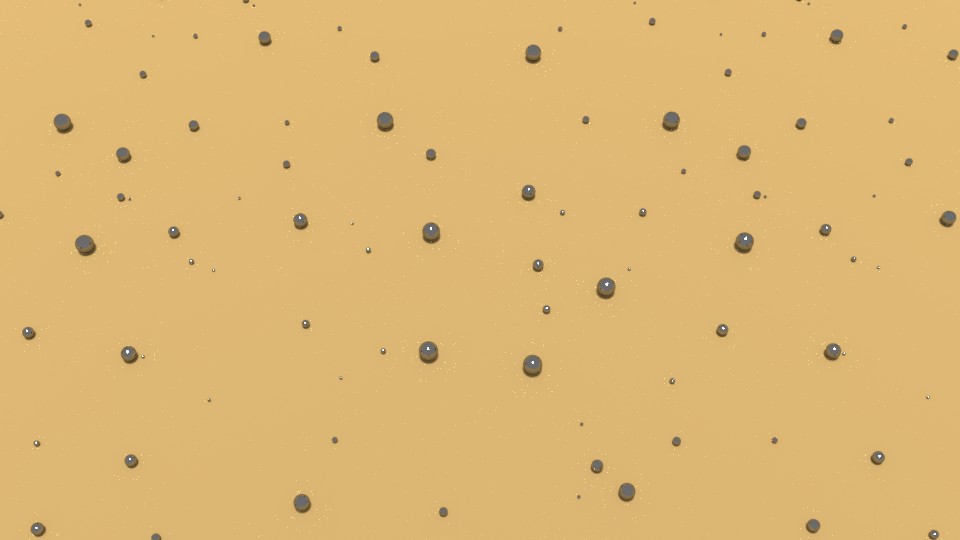class Polydisperse_Sphere_BRDF_Model
The class Polydisperse_Sphere_BRDF_Model is a
BRDF_Model that uses the
Double_Interaction_BRDF_Model
with
MieScatterer
and with a diameter distribution given by
SurfaceParticleSizeDistribution. This model is useful for estimating scatter from contaminated surfaces.

Parameters:
| Parameter | Data Type | Description | Default |
|---|---|---|---|
| lambda | double | Wavelength of the light
in vacuum [µm]. (Inherited from BRDF_Model.) |
0.532 |
| type | int |
Indicates whether the light is incident from above the
substrate or from within the substrate and whether the
scattering is evaluated in reflection or transmission.
The choices are: 0 : Light is incident from the above the substrate, and scattering is evaluated in reflection. 1 : Light is incident from the above the substrate, and scattering is evaluated in transmission. 2 : Light is incident from the within the substrate, and scattering is evaluated in reflection. 3 : Light is incident from the within the substrate, and scattering is evaluated in transmission. For 1, 2, and 3, the substrate must be non-absorbing. (Inherited from BRDF_Model). |
0 |
| substrate | dielectric_function | The
optical constants of the substrate, expressed as a
complex number (n,k) or, optionally, as a function of
wavelength. (Inherited from BRDF_Model.) |
(4.05,0.05) |
| distribution | SurfaceParticleSizeDistribution | The distribution of sphere diameters and the total number of spheres per unit area . | SurfaceParticleSizeDistribution |
| stack | StackModel_Ptr | Description of any stack of films deposited on the substrate. | No_StackModel |
| particle | dielectric_function | The optical constants of the spheres, expressed as a complex number (n,k) or, optionally, as a function of wavelength. | (1.5,0.0) |
| Dstart | double | The starting diameter [$D_{\rm start}$ in Eq. $(\ref{EqA})$] for the integration [µm]. This parameter should be at least as small as the smallest diameter in the distribution that will contribute significantly to the BRDF. | 0.1 |
| Dend | double | The ending diameter [$D_{\rm end}$ in Eq. $(\ref{EqA})$] for the integration [µm]. This parameter should be at least as large as the largest diameter in the distribution that will contribute significantly to the BRDF. | 100 |
| Dstep | double | The fractional step size [$s$ in Eq. $(\ref{EqC})$] for the integration. This parameter should be much less than 1. | 0.01 |
| fractional_coverage | double | If fractional_coverage is non-zero, then the model will scale the distribution so that the fractional area coverage of the spheres on the surface is fractional_coverage. The fractional area coverage $f_A$ of the distribution is determined by integrating \begin{equation} f_A = \int_{D_{\rm start}}^{D_{\rm end}} N(D)\; \pi (D/2)^2\; {\rm d}D \approx \sum_{i=0}^n N(D_i) \;\pi (D_i/2)^2 \; D_i \;s. \end{equation} If fractional_coverage is zero, then the model will assume that the distribution is appropriately normalized to give the fractional area coverage. | 0 |
| antirainbow | double | Non-absorbing spheres usually exhibit rainbows. This parameter adds a small amount of absorption to the spheres. The minimum extinction coefficient is determined to be $k=a\lambda/(4D\pi)$, where $a$ is the antirainbow parameter, $\lambda$ is the wavelength, and $D$ is the diameter. That is, if $a=1$, the particles will have an absorption coefficient given by $1/D$. To eliminate rainbows, a value of $a=10$ is usually sufficient. | 0 |
See also:
SCATMECH Home, Conventions, BRDF_Model, dielectric_stack, Double_Interaction_BRDF_Model, MieScatterer, SurfaceParticleSizeDistribution.
K. B. Nahm and W. L. Wolfe, "Light-scattering models for spheres on a conducting plane: comparison with experiment," Appl. Opt. 26, 2995-2999 (1987).
R.V. Peterson, P.G. Magallanes, and D.F. Rock, "Tailored particle distributions derived from MIL-STD-1246," Proc. SPIE 4774, 79-98 (2002).
M. G. Dittman, "Contamination scatter functions for stray-light analysis," Proc. SPIE 4774, 99-110 (2002).
J. Fleming, B. Matheson, M.G. Dittman, F. Grochocki, and B. Firth, "Modeling particle distributions for stray light analysis," Proc. SPIE 6291, 62910T (2006).
K. Balasubramanian, S. Shaklan, and A. Give'on, "Stellar coronagraph performance impact due to particulate contamination and scatter," Proc. SPIE 7440, 74400T (2009).
Include file:
#include "polydisperse.h"
Source code:
polydisperse.cpp
For More Information
SCATMECH Technical Information and Questions
Sensor Science Division Home Page
Sensor Science Division Inquiries
Website Comments
Current SCATMECH version: 7.22 (April 2021)